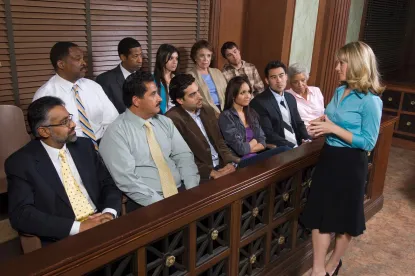Jurors are often presented with matters that are complex or unfamiliar to them. They are called to decide cases that involve the inner workings of microchips, insurance fraud, mergers and acquisitions, complex software, and other topics that are outside the purview of most people’s daily lives. They are willing and able to understand the evidence, but they need the attorneys and witnesses to help them to understand it.
As trial attorneys, one of our most important jobs is to make cases understandable for jurors. When jurors comprehend the themes, facts, and issues in our cases, they are more likely to side with our clients. Plus, they appreciate when we take the time to render complex material palatable for them. In short, our efforts make us more likeable.
In this article, I provide some ways we can help jurors understand our cases.
We Must Understand Our Own Cases
Before we can set about helping jurors to understand our cases, we must understand them ourselves. A case needs to be understood on a deeper level than just the facts and the law. We need to assess what the case is about on an emotional level and articulate what really motivated the parties.
For instance, a case is not about technology, it is about betrayal or greed or jealousy. Once the core theme is identified, we can then devise a narrative that evokes those emotions and go on to determine how each element of the case relates to that narrative.
At IMS, we frequently conduct pre-trial strategy sessions with our clients. During these early strategy sessions, we use a methodology we call “Mental Mining.” During such a session, we ask members of the trial team to describe their case from the client’s perspective. Next, we ask them to describe it from the opponent’s perspective. Throughout this process, key themes – and the strategies to convey those themes – emerge. This deep analysis of the case ultimately enhances our client’s ability to convey material and be persuasive at trial.
Cut Away Extraneous Facts
Once we have determined what the case is really about, we must eliminate those facts that do not advance our position or are inconsistent with the fundamental case theme. Any information that does not vigorously advance a client’s position will only serve to bore and confuse jurors. We must also do away with those merely good facts so that our story focuses on only those few great facts that powerfully advance the client’s position. Witness lists should get shorter; the number of exhibits should decrease. Not everything that hurts a case is worth fighting against; not everything that helps it is worth raising.
Once the Mental Mining process is complete, we recommend our clients test their presentations before focus groups or mock jurors that are composed of people demographically and ideologically similar to those we expect to see at the actual trial. By testing our themes and explanations of facts, we can determine whether they truly are as effective as we thought they would be. Mock jurors provide feedback concerning which testimony confuses them, which gives us an opportunity to make improvements. Those jurors tell us what parts of the case presentation are compelling and which are not, so that we can cut away at extraneous material even further.
Provide the Big Picture, Then Provide the Small Pictures
At trial, we must first and foremost provide jurors with a narrative theme. Early on, they need to know who did what to whom, when, and how. They also especially need to know why. Early knowledge of the theme will inspire jurors to then take the time to decipher more intricate details in the case. They will want to weigh how the various elements fall in line with that theme. As they begin to see how the evidence fits into the story, the story will become more compelling.
An economist expert witness we were preparing for trial was asked to make his presentation “juror friendly.” During his practice testimony, he provided a series of regression formulas and references to both standard deviations and “varying confidence intervals.” When we suggested that his presentation needed to be simplified further, he expressed concern that he might be perceived as talking down to the jurors.
Jurors are not angered when we simplify case facts for them. They appreciate the gesture. One great way to enable jurors to understand a case is to analogize complex facts to everyday concepts that are familiar to them. Also, pictures help to make complicated facts clear. For instance, the economist’s descriptions would have been so much more interesting and understandable had he used graphics to relay his concepts.
Set Aside Time to Simplify the Case
Ironically, the task of simplifying a case is time-consuming and requires that we exert a lot of mental effort. This effort and diligence is worthwhile, however: the benefits will most definitely be reaped during trial. When we take the time to ensure jurors understand the main theme of the case, they will be inspired to learn all they can about the evidence, in an effort to determine whether it aligns with that theme. The analogies and graphics we devise will help them to understand the evidence so that they can properly weigh it. When we inspire deep understanding of the case, it lessens the possibility jurors will fall back on suppositions and personal biases. Most importantly, when we enable jurors to comprehend our cases, we increase the chances they will side with our clients.




 />i
/>i

